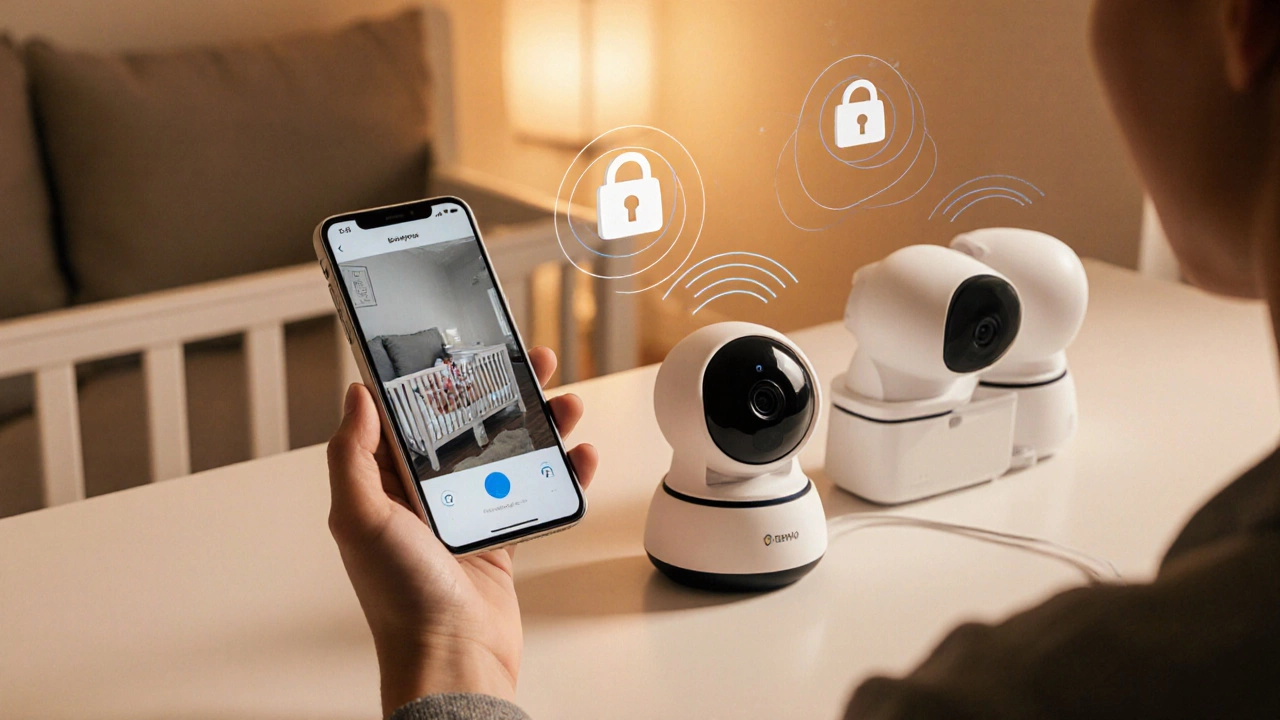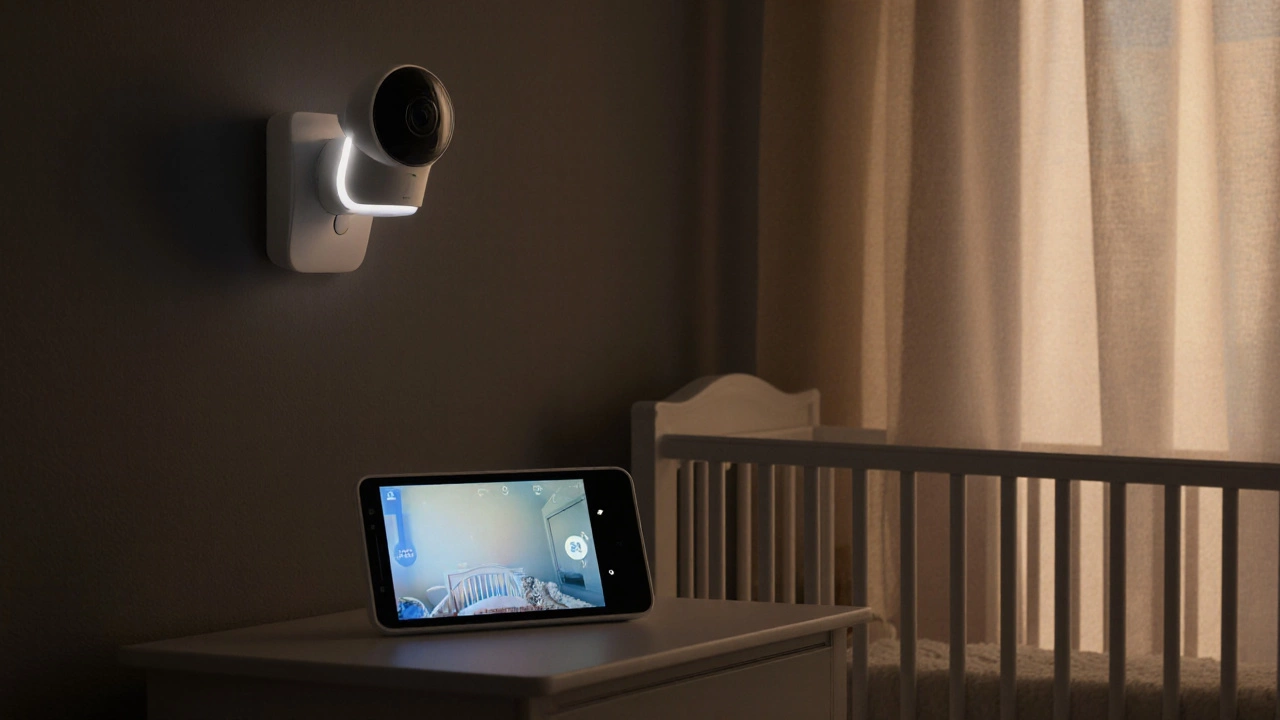When you hear "baby monitor" you probably picture a sleek device that streams video over your home Wi‑Fi. But many parents prefer a monitor that works even if the internet drops or if they simply don’t want a constant Wi‑Fi signal in the nursery. baby monitor technology has been around for decades, and several connection methods let you keep an eye on your little one without relying on a wireless network.
Why Choose a Non‑WiFi Monitor?
Wi‑Fi monitors are convenient, but they come with trade‑offs: they need a stable router, they can be vulnerable to hacking, and they add to your home’s radio traffic. A non‑WiFi monitor sidesteps those issues and often offers longer battery life, simpler setup, and a more reliable link over short distances.
Core Connection Technologies
Below are the main ways a baby monitor communicates between its camera or microphone and the parent unit without using Wi‑Fi. Each uses a different part of the radio spectrum and has unique strengths.
- DECT Digital Enhanced Cordless Telecommunications, a 1.9GHz band originally designed for cordless phones
- RF Radio Frequency, typically 2.4GHz or 900MHz, offering direct‑to‑receiver links
- Analog Simple amplitude‑modulated audio or video transmission, often on 49MHz or 2.4GHz
- Infrared (IR) Line‑of‑sight light communication, used for audio‑only monitors
- Bluetooth Low Energy (BLE) Short‑range 2.4GHz protocol optimized for low power consumption
DECT Baby Monitors
DECT monitors are a favorite among parents who want crystal‑clear audio and secure digital transmission. Because DECT operates on a dedicated 1.9GHz band, it avoids most home Wi‑Fi traffic. Most models pair a parent unit the handheld receiver that displays audio or video with a camera the bedside unit that captures sound and image using a built‑in DECT radio.
Key benefits:
- Digital encryption (often 128‑bit) prevents eavesdropping.
- Battery life can exceed 10hours on the camera and 20hours on the parent unit.
- Range typically 300ft indoors, enough for most homes.
Drawbacks include a higher price point and limited multi‑camera support; many DECT systems only allow one camera per parent unit.
RF (Radio Frequency) Monitors
RF monitors use the same spectrum that cordless phones and older Wi‑Fi routers use. They can be analog or digital, and many offer both audio‑only and video options.
Advantages:
- Often the cheapest option on the market.
- Simple one‑button pairing-just turn both units on.
- Range can reach 500ft outdoors, useful for large houses or homes with a detached nursery.
However, RF signals can be more vulnerable to interference from other household devices, especially if the monitor shares the 2.4GHz band with microwaves or Bluetooth devices. Some budget models lack encryption, meaning anyone with a compatible receiver could listen in.
Analog Monitors
Analog monitors hark back to the 1990s. They transmit a continuous wave of audio (and sometimes video) without digital encoding. Because they’re unencrypted, they’re typically the least secure choice.
Why would anyone still buy one?
- They’re ultra‑simple-just plug in the camera, turn on the receiver, and you’re set.
- Battery life can be impressive, often 30hours on the camera.
- They’re cheap; you can find a functional set for under $30.
If privacy is a concern, stick to a digital DECT or encrypted RF model instead.
Infrared (IR) Audio Monitors
IR monitors use light pulses to send audio signals. The parent unit has a tiny photodiode that detects the blinking IR signal and converts it back into sound.
Pros:
- Zero radio interference-nothing else in the house emits IR at the same frequency.
- Can be completely invisible to children because the light is beyond human sight.
Cons:
- Line‑of‑sight required; a closed door blocks the signal.
- Usually audio‑only, so you won’t see video.
- Range is limited to about 30ft, suitable only for small apartments.
Bluetooth Low Energy (BLE) Monitors
BLE is a newer entrant to the baby‑monitor world. It uses the same 2.4GHz band as Wi‑Fi but communicates in short bursts, dramatically reducing power consumption.
Advantages:
- Battery life can hit 24hours on the camera and 48hours on the receiver.
- Most smartphones can act as a parent unit with the right app, eliminating the need for a separate handheld.
- Built‑in encryption (AES‑128) keeps the feed private.
Potential drawbacks:
- BLE range is usually 50-70ft, shorter than DECT or RF.
- Reliant on the phone’s OS version; older Android or iOS devices may experience lag.
- Because it uses the same band as Wi‑Fi, heavy network traffic can cause occasional glitches.
Choosing the Right Non‑WiFi Monitor
Here’s a quick decision matrix to match your household needs with the appropriate technology.
| Technology | Typical Range (indoor) | Security | Battery Life (camera) | Cost (USD) |
|---|---|---|---|---|
| DECT | ~300ft | Encrypted (128‑bit) | 10‑12h | 150‑250 |
| RF (digital) | ~400ft | Optional encryption | 8‑10h | 80‑130 |
| Analog RF | ~250ft | None | 12‑15h | 30‑50 |
| Infrared (IR) | ~30ft (line‑of‑sight) | None (optical) | 20‑30h | 25‑40 |
| BLE | ~60ft | AES‑128 encryption | 24‑30h | 100‑180 (incl. app) |

Setup Tips for a Smooth Experience
- Place the camera high enough to avoid accidental knocks-ideally mounted on a wall or high crib rail.
- Keep the parent unit within the advertised range and avoid metal barriers that can block signals.
- For DECT or RF, pair the units in a quiet room first; interference spikes during setup can cause a failed link.
- If you’re using BLE, ensure your smartphone’s Bluetooth is set to “Always On” and disable battery‑saving modes that throttle background connections.
- Test the monitor at night before relying on it-turn lights off, walk around the house, and verify the audio/video feed stays stable.
Common Troubleshooting Scenarios
Signal drops when I close the nursery door - This is typical for IR and BLE units that need a clear line of sight. Try repositioning the parent unit or adding a small repeater (some DECT models support a range extender).
Interference from my cordless phone - If both devices use the 1.9GHz DECT band, they can clash. Switch the monitor to its “privacy” channel (many models let you select from 4‑8 frequencies).
Battery drains fast on the camera - Verify you’re not using high‑resolution video continuously. Most monitors have a “night‑vision only” mode that uses less power.
Weird static on the audio - Check for other 2.4GHz devices nearby (microwaves, Wi‑Fi routers). Moving the parent unit a few feet away usually clears the static.
Future‑Proofing Your Choice
Technology evolves fast, but the basic radio principles stay the same. If you’re buying today, consider these long‑term factors:
- Availability of spare batteries-DECT and BLE systems often use rechargeable Li‑ion packs that can be replaced.
- Firmware updates-some manufacturers release security patches for their digital DECT and BLE monitors.
- Multi‑camera expansion-look for systems that let you add extra cameras without buying a whole new set.
By planning ahead, you won’t have to replace the whole setup when your first child outgrows the crib.
Frequently Asked Questions
Can I use a non‑WiFi monitor with my smartphone?
Only BLE monitors support a direct app connection. DECT, RF, and analog models need a dedicated parent unit; some newer DECT units bundle a Bluetooth bridge, but the core link remains non‑WiFi.
Is an analog monitor safe for my baby’s privacy?
Analog signals are broadcast unencrypted, so anyone with a compatible receiver can listen in. If privacy matters, choose a digital DECT or encrypted RF model instead.
What’s the typical range for a DECT monitor in a two‑story house?
Most DECT units maintain a solid connection up to 300ft indoors, which usually covers both floors of an average family home. Thick concrete walls can reduce that distance, so testing is recommended.
Do I need a separate charger for the camera and parent unit?
Most modern monitors include a shared charging dock that holds both units. Some BLE models use USB‑C ports on each device, letting you charge them with any standard charger.
Can I use a baby monitor in a rental property without drilling?
Yes. Stick‑on mounts, suction‑cup brackets, or simple tabletop stands work for all non‑WiFi types and leave no permanent marks.
